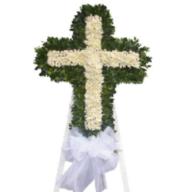Mozart 的資料!!(15) 急!!!!
2010-03-01 2:33 am
我需要 Mozeart 的資料!!!! (中 & 英)
回答 (2)
2010-03-01 4:30 am
✔ 最佳答案
Wolfgang Amadeus Mozart莫札特,是歐洲最偉大的古典主義音樂作曲家之,1756年1月27日-1791年12月5日出生於神聖羅馬帝國時期的薩爾茲堡,當時這是薩爾斯堡總教區(Archbishopric of Salzburg)的首府,屬於神聖羅馬帝國一。父親利奧波德·莫札特(1719年—1787年)是薩爾斯堡大主教教廷交響樂隊的演奏員和作曲家,母親為安娜·瑪麗亞·波特爾(Anna Maria Pertl)(1720年—1778年)。身為家中第七個小孩,在他姊姊瑪利亞·安娜(Maria Anna)1751年出生之前,以及之後至他出生之間的這段時間,分別有三位及兩位不幸夭於年幼。
35歲便英年早逝的莫札特,留下的重要作品總括當時所有的音樂類型,根據當代的考證顯示,在鋼琴和小提琴相關的創作,他無疑是一個天份極高的藝術家,譜出的協奏曲、交響曲、奏鳴曲、小夜曲、嬉游曲等等成為後來古典音樂的主要形式,他同時也是歌劇方面的專家,他的成就至今不朽於時代的變遷。
莫札特三歲便展現出他音樂奇特才能,他不僅具備絕對音準更有超出常人的記憶力,五歲時更請求父親教授大鍵琴,隨後亦獵及小提琴、管風琴和樂曲創作,至此他的能力宛若平地一聲雷響徹雲霄,在學會閱讀、書寫或計算甚至能懂得樂譜視讀、巧弄拍律。六歲,時值1762年,已譜出三首小步舞曲(KV.2、4、5)和一曲快板(KV.3)。
在生命最後幾年間,莫札特身體欠佳,他創作許多的奏鳴曲、協奏曲、交響曲、歌劇(例如《女人皆如此》(Così Fan Tutte),他最後的與Lorenzo da Ponte合作的作品)。1790年時值約瑟夫二世駕崩(他的繼位人利奧波德二世不喜歡莫札特)當時他的好友交響樂之父海頓也去了倫敦,使得這段時間的莫札特意志格外消沉。
1791年一位共濟會弟兄兼維也納一個知名小劇院導演Emanuel Schikaneder托他寫一出歌劇。他提供了一本關於這本歌劇的小冊子,而莫札特也為他譜出一折《魔笛》(德語:Die Zauberflöte),這部作品於9月30日一炮而紅,也是莫札特最後一出歌劇。
參考資料http://zh.wikipedia.org/wiki/%E6%B2%83%E5%B0%94%E5%A4%AB%E5%86%88%C2%B7%E9%98%BF%E9%A9%AC%E5%BE%B7%E4%B9%8C%E6%96%AF%C2%B7%E8%8E%AB%E6%89%8E%E7%89%B9
由於回答內容字數超過限制,不能中英並錄。
2010-03-01 5:46 am
圖片參考:http://imgcld.yimg.com/8/n/HA00782940/o/701002280141213873414150.jpg
Mozart , Wolfgang Amadeus (mōt'särt, Ger. vôlf'gäng ämädā'oos mō'tsärt) [key], 1756–91, Austrian composer, b. Salzburg. Mozart represents one of the great peaks in the history of music. His works, written in almost every conceivable genre, combine luminous beauty of sound with classical grace and technical perfection.Early Years
A remarkable prodigy, Mozart was taught to play the harpsichord, violin, and organ by his father, Leopold, and began composing before he was five. When Mozart was six, he and his older sister, Marianne, were presented by their father in concerts at the court of the Empress Maria Theresa in Vienna and in the principal aristocratic households of central Europe, Paris, and London. His progress as a composer was amazing; by the age of 13 he had written concertos, sonatas, symphonies, a German operetta, Bastien und Bastienne (1768), and an Italian opera buffa, La finta semplice (1769). During a tour in Italy (1768–71) he absorbed Italian style, received great acclaim for his concerts in Rome and other major cities, and successfully produced his opera Mitridate, re di Ponto (1770).
In 1771 Mozart was appointed concertmaster to the archbishop of Salzburg. However, he was dissatisfied with his position and the restrictions placed on his work, and after six years he went on tour in search of a better post. He traveled with his mother, visiting numerous cities, including Munich, Mannheim (where he fell in love briefly with the singer Aloysia Weber), and Paris. Despite the successful performance in Paris of his Symphony in D (1778), known as the Paris Symphony, Mozart did not receive much attention there.
Maturity
After resuming his post at Salzburg in 1779, Mozart composed Idomeneo (1781) for the Bavarian court. One of the best examples of 18th-century opera seria, it marks the first opera of Mozart's maturity.(To be cont.......)
2010-02-28 21:48:31 補充:
In the year of its production he resigned from the archbishop's service and moved to Vienna, where in 1782 he married Constanze Weber, the sister of Aloysia. Financial difficulties beset him almost immediately,
2010-02-28 21:49:22 補充:
since he was unable to secure a suitable position and had to earn his living by teaching and giving public concerts.
In Vienna, Mozart met Haydn, and the two developed a long and warm friendship that benefited the work of each.
2010-02-28 21:49:36 補充:
Mozart's six string quartets (1782–85) dedicated to Haydn are testimony of his influence. Die Entführung aus dem Serail (The Abduction from the Seraglio, 1782), a singspiel combining songs and German dialogue, brought Mozart some success.
2010-02-28 21:50:26 補充:
The Viennese court opera was dominated by Italian tradition, and in his next operas Mozart turned to the style of the Italian opera buffa. With the librettist Lorenzo Da Ponte he created the comic masterpiece Le Nozze di Figaro (The Marriage of Figaro, 1786), which,
2010-02-28 21:50:48 補充:
after a lukewarm reception in Vienna, became a sensation in Prague. From that city also came the commission that resulted in Don Giovanni (1787). Although it has come to be regarded as one of the most brilliant operas ever written,
2010-02-28 21:51:33 補充:
it was considered rather difficult by his public, which preferred his more frivolous works.
At the death of Gluck (1787), Mozart succeeded him as chamber musician and court composer to Joseph II. His salary was far less than Gluck's had been,
2010-02-28 21:52:01 補充:
however, and his financial troubles persisted to the end of his life. An example of the elegant pieces written for social occasions at this time is the famous serenade for strings, Eine Kleine Nachtmusik (1787).
2010-02-28 21:52:44 補充:
Last Works
In the space of three months in 1788 Mozart composed his last three symphonies—No. 39 in E Flat, No. 40 in G Minor, and No. 41 in C, called the Jupiter Symphony; they all display a complete mastery of classical symphonic form as established by Haydn. In 1789 Mozart traveled to Berlin,
2010-02-28 21:53:24 補充:
where he was presented to King Frederick William II. Mozart's last three string quartets (1789–90) were written for the king, an accomplished cellist. Returning to Vienna, Mozart composed his clarinet quintet (1789); his last opera buffa, Così fan tutte (1790),
2010-02-28 21:54:36 補充:
& his last piano concerto, the Piano Concerto in B Flat (1791).
In Die Zauberflöte (The Magic Flute, 1791), with libretto by the actor Emmanuel Schikaneder, Mozart returned to the German opera in the singspiel, bringing this form of light musical entertainment to a height of lyrical and symbolic art.
2010-02-28 21:55:00 補充:
Its composition was interrupted by a commission from a wealthy nobleman for a requiem mass and by the composition of La Clemenza di Tito (1791), an opera seria for the coronation of Leopold II as king of Bohemia.
2010-02-28 21:55:21 補充:
After the production of Die Zauberflöte, Mozart worked feverishly on the requiem, with the foreboding that it would commemorate his own death. He died at the age of 35 without finishing it; the work was completed by his pupil Franz Süssmayr.
2010-02-28 21:55:34 補充:
A thematic catalog of Mozart's works was made by Ludwig von Köchel and published in 1862; an edition revised by Alfred Einstein appearing in 1937. Mozart's works are usually identified by their numbers in this list.
參考: Encyclopedia+me
收錄日期: 2021-04-13 17:07:07
原文連結 [永久失效]:
https://hk.answers.yahoo.com/question/index?qid=20100228000051KK01412


